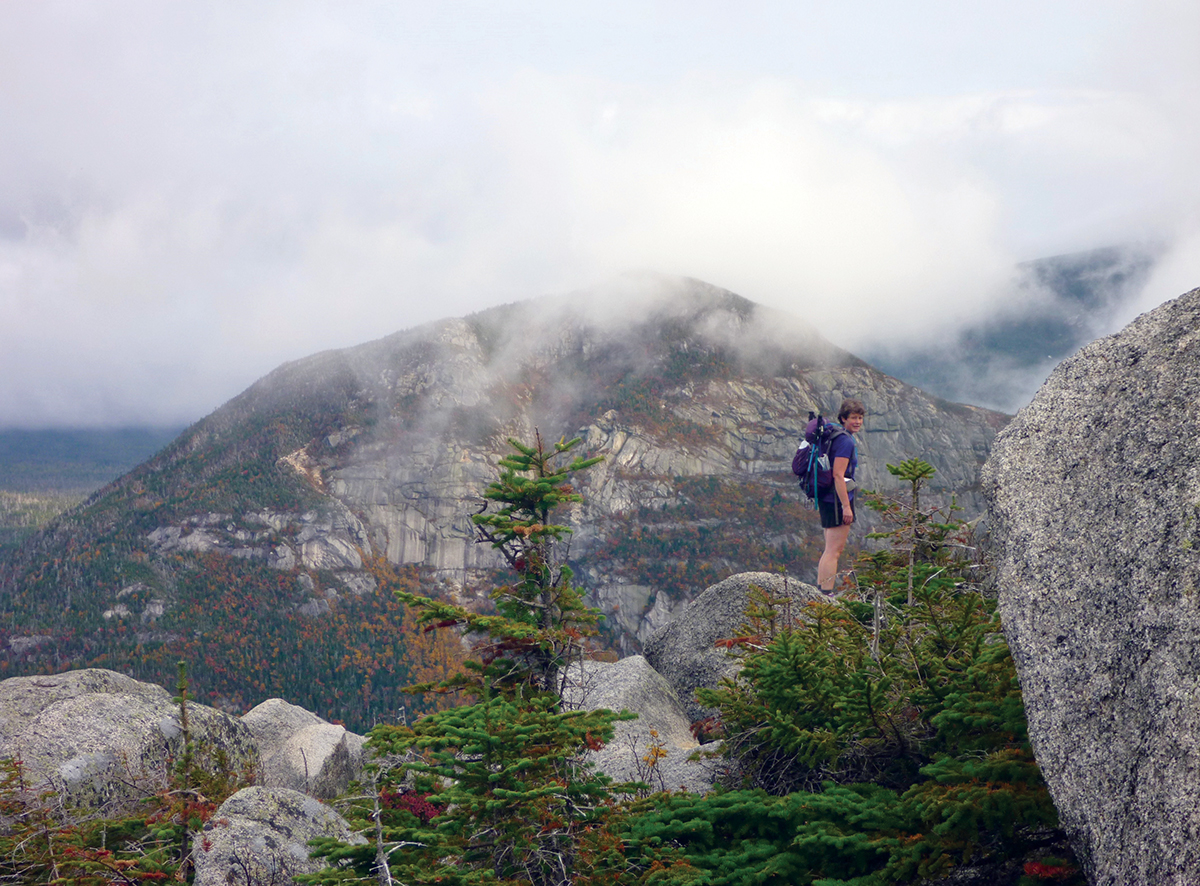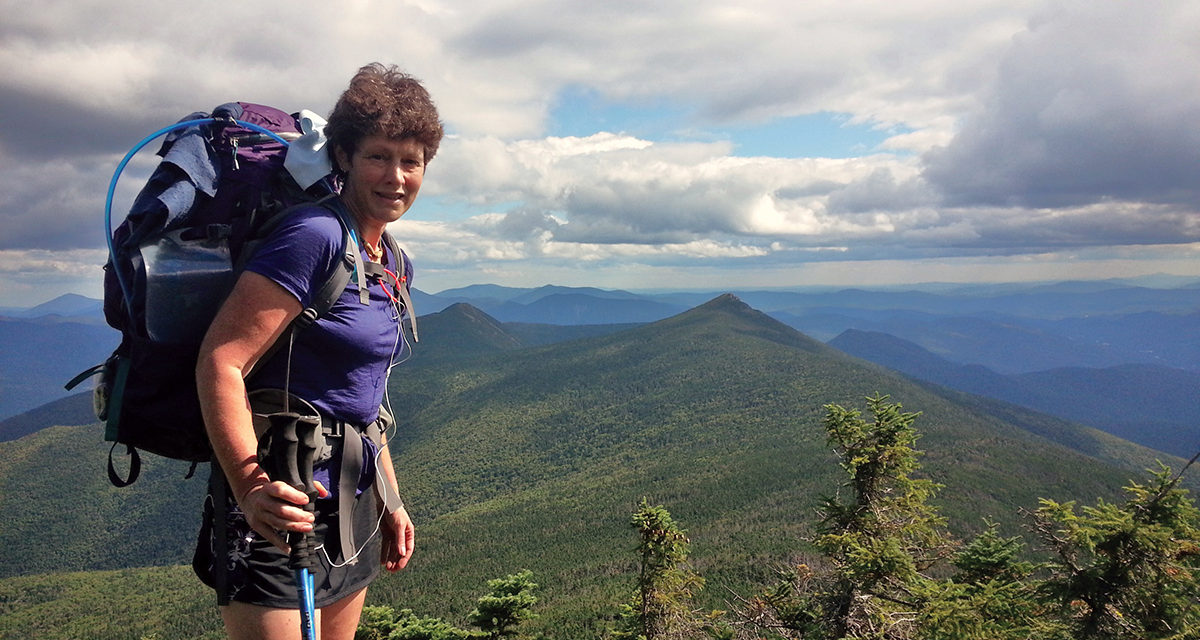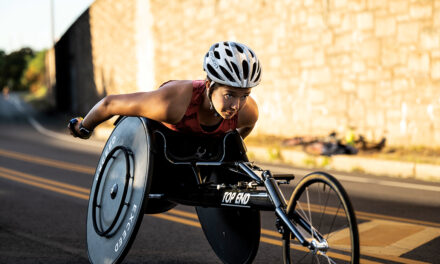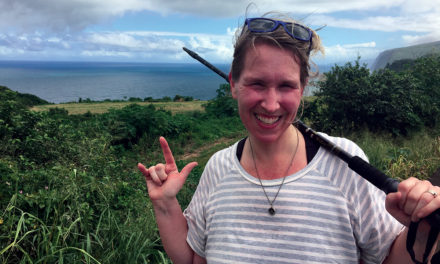For Kelly Germann, 49, hiking the Appalachian Trail was a lifelong dream. What she thought would be an intense physical challenge turned out to be a test of wills and a bumpy path to deep self-discovery.
At 23, I promised myself that before the age of 45 I would hike the Appalachian Trail. I realize now that 23-year-olds say and think some really stupid things. I really had no clue what the Appalachian Trail was—just that it was a long and that a lot of people backpacked it.
I had always been an outdoorsy person, backpacking at first one or two nights, then for one week here and two weeks there. In 2012, when I was 43, my partner, John, said: “If you’re ever going to hike the Appalachian Trail, you should do it now. I’m here to help you make that happen. You’ll never do it if you don’t do it now.” I realized he was right.
It took me a year and a half to get prepared. When you are out on the trail, you can’t have a mortgage, car payments, a job. I saved money. The idea of living in the woods on my own with everything I needed to survive on my back that was the most appealing thing to me.
There are plenty of times you can hike for days or weeks at a time and not see another human being, but the time of year I was going is called “the bubble,” when most people get started. I anticipated starting alone and then meeting up with people who had a similar hiking style and personalities. I started on March 29 in Spring Mountain, Ga. It was quite freezing the first week I was out there. After about a week, I met up with three folks and ended up hiking the next couple of weeks with them.
But then I hurt my knee. One beautiful day, I was hiking down a mountain in North Carolina. I was thinking how everything was going so well, when I suddenly felt like someone stabbed me in the knee with a hot iron. I fell to the ground screaming. Over the next day and a half, I struggled for 13 miles to get to a place where I could get help. There, I completely collapsed and found medical help. My friend David lived 2 hours away Ashville, so I stayed with him for 2 weeks, nursing my knee. In retrospect, I should have quit, but I was too determined.
Within 2 days of being able to walk on it again, I was back on the trail, but my knee was damaged from that point forward. Before I hurt it, I was doing 12 to 15 miles a day. When I got back on the trail, I could only do 7 or 8 miles. I was happy to be back on the trail, but I had lost the bubble of people. The pain in my knee wasn’t the worst thing; it was losing track of everyone.
I hiked alone for 6 and a half weeks. That was probably the most challenging and educational time in my entire life. You really get to know yourself pretty deeply when you are utterly alone for that long. You learn things you don’t necessarily like. You go a little crazy in your head. It’s difficult to remain positive when all you have to focus on is your pain and the struggle of the trail, and no one to take your mind off that. I think I would have been able to deal with the physical had I not been dealing with the psychological.
DIY Trailblazing
Want to take on the challenge of the Appalachian Trail? Test your wills on sections of the 2,200-mile trail that cut through New Jersey. The trail is marked by white blazes. Visit appalachiantrail.org for more information.
SUNFISH POND/WORTHINGTON STATE FOREST: Seven miles of the trail cut through Worthington State Forest, including a portion that runs by Sunrise Pond, one of the state’s natural wonders. The pond was carved out by glacial forces during the last ice age. There is a backpacking wilderness camping area a quarter-mile from the pond.
SUNRISE MOUNTAIN/STOKES STATE FOREST: A 12.5-mile, rocky portion of the Appalachian Trail cuts through Stokes State Forest along the Kittatinny Mountain Ridge. The peak at Sunrise Mountain, at more than 1,600 feet, affords picturesque views of New Jersey farmland, forests, and mountain ridges. There are two overnight shelters along the Appalachian Trail.
HIGH POINT STATE PARK: Eighteen miles of the trail stretches through High Point State Park—to the south, the trail offers scenic views along a rocky ridge; to the north, you’ll go through hemlock gorges. In the park, you’ll also find the 220-foot High Point Monument was built to honor war veterans and offers views of the Pocono Mountains in the west, the Catskills in the north and the Wallkill River Valley in the southeast.
There were days on end where I feared for my life, minute upon minute, hour upon hour, day upon day. That is the deepest, most extreme fear I have ever experienced in my life.
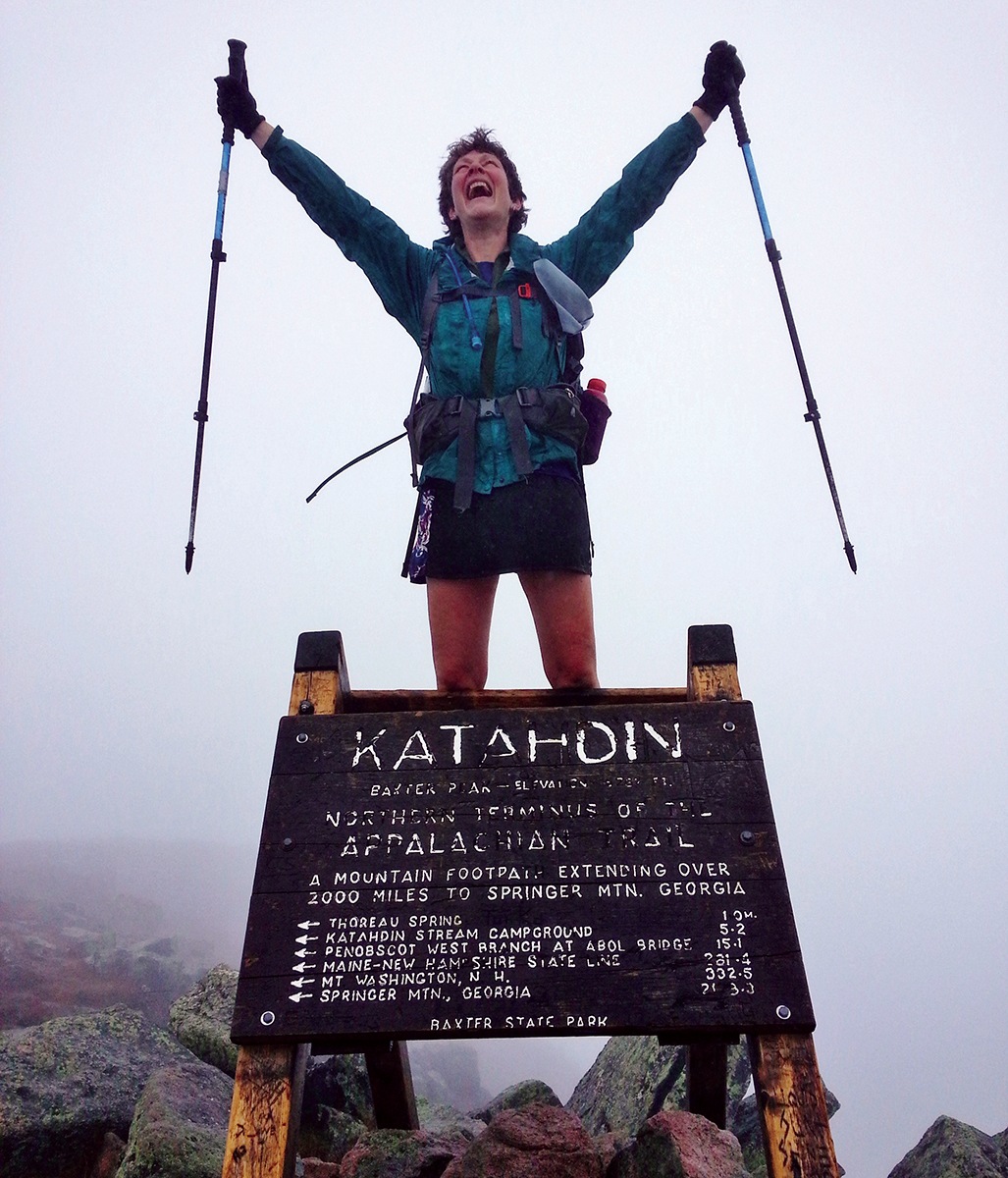
Kelly Germann celebrates completing the Appalachian Trail at Mount Katahdin.
Never Giving Up
Every day, I thought about quitting. There’s a saying on the trail that I repeated to myself a thousand times: Never quit on a bad day. Honestly, every time the trail crossed a road, I would look left, and I would look right, and I would say to myself, “I could walk into a town right now and be done with this.” But every time I chose to go back into the woods.
You don’t have a lot of opportunities to get clean on the trail. Getting into a trail town there is always an agenda: You have to resupply your food, you want to shower and get your body and clothes clean. You only have two sets of clothes on you—the ones you are wearing and the ones you sleep in. You get really dirty and sweaty and stinky.
I had a go-to meal every time I got into a trail town: a large pizza with all the vegetables I could get on them, a pint of Ben & Jerry’s and the biggest salad from a local supermarket. I was a vegan before I went out on the trail, but I understood from research that staying vegan on the trail would be near impossible, so I added eggs and dairy back into my diet about 2 months before going out. There is always a balance between the weight you are carrying and the amount of food you are consuming. The typical hiker will burn between 6,000 and 8,000 calories a day, and it’s next to impossible to carry that many calories without carrying too much weight. We all lose a lot of weight—I lost 25 pounds.
Was I ever scared? Yes, but not for the reasons people usually think—bears, snakes, that sort of thing. What there is to be afraid of on the trail is the trail itself. The White Mountains in New Hampshire are well known as the most extreme parts of the trail. Knowing what I would be facing, I intentionally waited at a camp to hook up with three other people who were of the same general mind that you shouldn’t hike through New Hampshire and Maine alone. Once you get into New England, it’s not so much hiking as it is climbing. There is a lot of hand over hand stuff where you basically are going straight up a rock face. If your pack shifts in the wrong direction at the wrong time and you lose your finger hold, you are just flying off the rock. There were days on end where I feared for my life, minute upon minute, hour upon hour, day upon day. That is the deepest, most extreme fear I have ever experienced in my life.
After finishing New Hampshire, I felt like I could do anything. While Maine had its own challenges, it was so amazingly gorgeous and wonderful and wild. Anywhere on the trail you can be hundreds of miles away from humanity, be completely alone, but in Maine, I don’t know, there is just something so much more visceral and deeply wild and untouched. I also was lucky enough to be in Maine just as autumn was coming on.
I finished on September 29, 6 months to the day I started. Because I lost 2 weeks, I ended up skipping a section of the Mid-Atlantic, between West Virginia and Massachusetts, so I could finish the trail on time. (I had negotiated a 6-month leave of absence with work.) When I came home, I still had 500 miles to complete, so over the next 3 years, I went out for long weekends and ate up 45- to 50-mile chunks at a time. I officially finished in October 2017.
I do, in part, look back on my experience as somewhat as a failure; I truly expected to embrace and really love it. It was something I had wanted for so long, but it turned out to be so challenging. I had such a hard time some days and hated it sometimes. I came home feeling like a broken person physically and mentally. So many other people had such exuberance and joy, experiencing all of the things I wanted for myself and wasn’t feeling.
But I don’t regret doing it. Absolutely not. There isn’t a day that goes by where something from the trail pops into my head. Not a day goes by that it isn’t with me and I expect that for the rest of my life.
